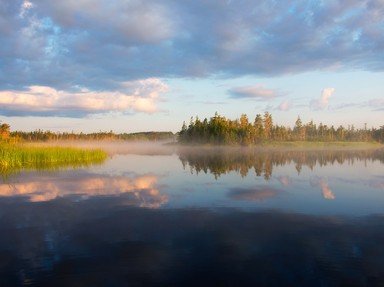Quiz Answer Key and Fun Facts
1. Which of the following rivers that is found in both Southern British Columbia and the Northwestern part of Washington State passes through E.C. Manning Provincial Park?
2. Bow Valley Provincial Park in Alberta, Canada features a variety of activities including mountain biking, horseback riding and rock climbing. Which of the following rivers is found in this park?
3. The Cypress Hills Interprovincial Park is located in both Alberta and Saskatchewan. Which tributary that runs through the center of the park ultimately flows into the Gulf of Mexico?
4. Whiteshell Provincial Park in Manitoba, Canada was established in 1961 in a region once inhabited by the Ojibwe people. The Whiteshell River is one of two main rivers through the park. What is the other river that is aptly named after the capital city of Manitoba?
5. Polar Bear Provincial Park is one of the most isolated parks in all of Canada. It is popular with thrill seekers and those interested in the preservation of wildlife and nature habitat. What river that was also responsible for the flooding of the community of the same name runs through the park?
6. The province of Quebec recognizes all of their parks as "National" parks. The oldest of these is Mont-Tremblant National Park which dates back to the 1850s. Over the years, it was divided into three main areas. Which of the following is not one of those areas?
7. Which of the following provincial parks located on the Saint John River in New Brunswick was created in the 1960s during the building of a dam by the same name?
8. Brudenell River Provincial Park is situated on the river which the park is named after. This river is part of an estuary system known as the "Three Rivers". What other two rivers are part of this system? (Hint: Think Shakespeare)
9. What Nova Scotia provincial park is found within the Baddeck River system and derives its name from a Gaelic word meaning "white water"?
10. The island of Newfoundland boasts having the second largest National Park in Canada with Gros Morne National Park. The Labrador region boasts having just one provincial park situated outside of a once thriving fishing village and is named after both the village and bordering river. What park is this?
Source: Author
apathy100
This quiz was reviewed by FunTrivia editor
agony before going online.
Any errors found in FunTrivia content are routinely corrected through our feedback system.
